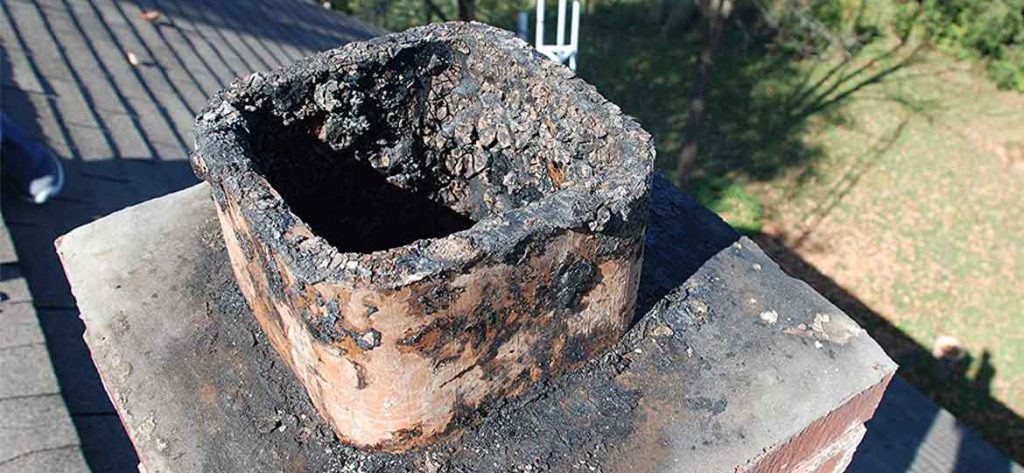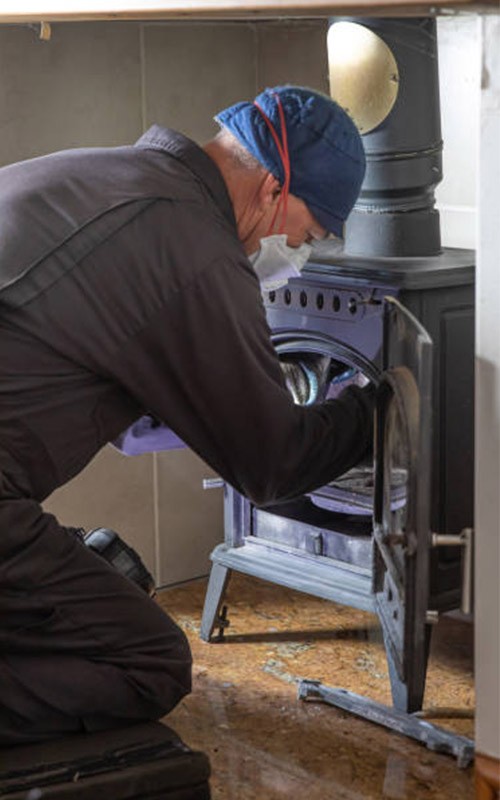One of the most common fireplace maintenance problems is keeping it clean. There are many different types of fireplace cleaning kits available. One of these cleaning methods is cleaning logs. Determine whether a cleaning log is appropriate for your fireplace, and know about its benefits & drawbacks in this article.
Cleaning logs aid in the removal of material that has accumulated along the fireplace walls. Creosote is the name for these sticky deposits. Creosote that has been accumulated for a long time becomes extremely combustible, which is why fireplace fires are so common.

As a result, creosote removal is essential for your protection. Cleaning logs have unique compounds that are released when the wood is burned in the fireplace. These chemicals react with creosote layers, breaking them down into tiny pieces. The creosote deposits are eventually converted to ash, which falls into the fireplace.
When the byproducts of burning wood come into contact with the comparatively chilly fireplace walls, they condense into creosote. It occurs in all fireplaces, but it is intensified by inadequate chimney ventilation and the use of badly seasoned or, worse, damp wood.
Creosote accumulates on the interior of your fireplace throughout the course of the season. It must be cleaned out every year since it is highly combustible and a typical cause of fireplace fires. That job is sometimes easier said than done.
Creosote is generally light, soft, or crusty at first, but it may quickly develop into a thick, oily, tar-like material that takes a long time and effort to clean a fireplace. The more difficult your fireplace is to clean, the more it will cost you.
Fireplace cleaning logs make creosote removal simpler. Chemical additives in them climb up through your fireplace and adhere to creosote deposits. These chemicals dry up the creosote, making it a flaky, less-flammable material that's easier to remove.

The chemicals act on the creosote for about two weeks after you burn a fireplace cleaning log and then continue to burn ordinary firewood. Some of the dry creosote will fall into the fireplace, which you may clean up with a sweeping motion.
That job is sometimes easier said than done. Creosote is generally light and soft at first, but it can become hard and crusty with time.
The more difficult your chimney is to clean, the more it will cost you.
The entire procedure can minimize the accumulation in your fireplace by up to 60%. This implies a quicker and simpler task for the cleaning company, as well as a reduced fee for you.
The popularity of cleaning logs stems from their ease of usage. You remove the log from its package and set it in a fire that has been kindled.
Furthermore, the majority of fireplace cleaning logs are inexpensive. They're simple to store and keep for a long time.
Many fireplace columns are rather tall, having a somewhat curved form. Cleaning such fireplaces by hand is challenging since brooms cannot reach creosote accumulated at awkward angles.
The vaporized version of the cleaning log, on the other hand, may penetrate creosote deposits in any size or shape of the fireplace.
Other solutions for cleaning fireplaces can't break down creosote deposits into ash. In these instances, you must physically manage the gathered material after cleaning the fireplace.
This is not only a time-consuming chore, but it may also be hazardous to one's health. The debris is full of tar-based particles, which can trigger allergic responses.

Soot deposits, which are a major problem with coal and oil-fueled fireplaces, may be removed by manually cleaning the fireplace. The usefulness of cleaning logs is restricted to wood-burning fires. Most cleaning logs are not suitable for use in propane or natural gas fireplaces.
Cleaning logs will not be able to remove larger obstacles in the fireplace, such as bird nests. Furthermore, chimney-cleaning logs cannot ensure that all creosote deposits are completely removed.
Others have expressed worries about the safety of cleaning logs. Some unweathered creosote pieces may tumble down with the weathered creosote. Creosote may create flame bursts in the fireplace because it is combustible.
In wood-burning fireplaces, cleaning logs is suggested for basic fireplace cleansing. These logs aren't a substitute for a full fireplace cleaning. However, using a cleaning log on a regular basis might assist to extend the time between hand fireplace cleanings.
Some people are dissatisfied that a log can't replace a visit from a cleaning company, but keep in mind that a Fireplace Cleaning service includes more than just cleaning the fireplace flue.

Fireplace cleaners who are licensed by the CSIA clean, inspect, and repair chimneys, since chimneys, like other elements of your home, wear out over time.
Your fireplace's safety necessitates yearly maintenance, of which sweeping is only one aspect.
The fireplace cleaners should examine the fireplace cap, top, plaster, lining, and flue liner during your annual appointment. The smoke chamber, damper, and burner are all given special attention within the fireplace.
Finally, your fireplace cleaner must inspect your fireplace.